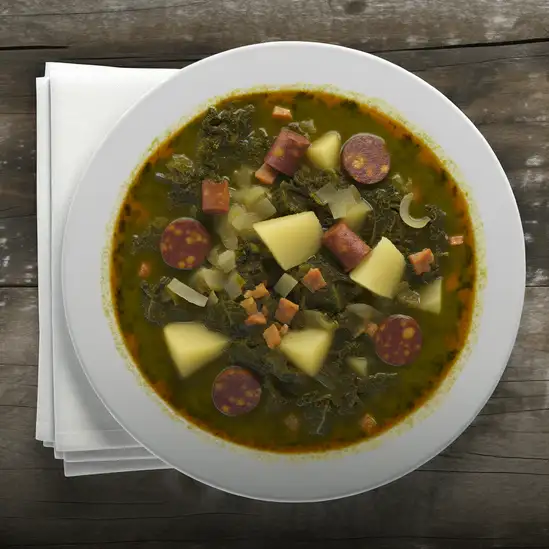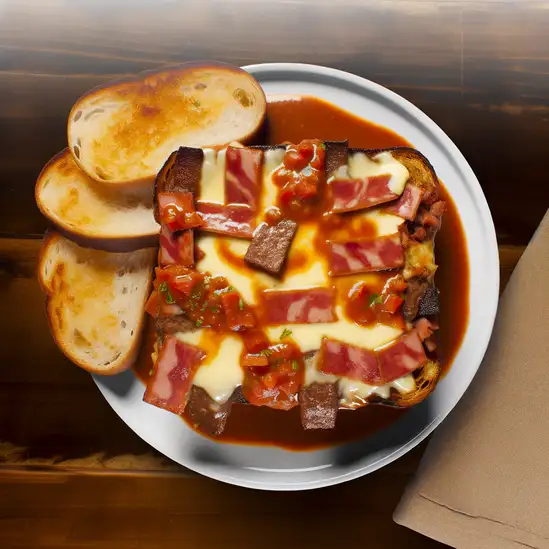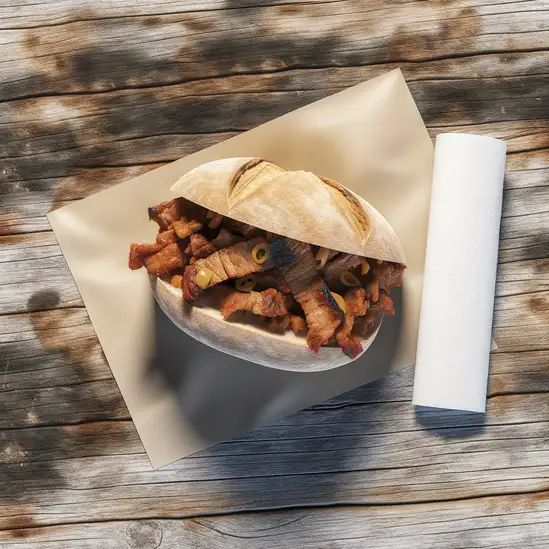


Imagine stepping into a city where every corner hums with a quiet,soulful energy—that’s Porto. It’s a place where the old world meets a lively,modern pulse,wrapped in the warm glow of terracotta rooftops and the shimmering Douro River. Walking through its narrow,cobbled streets,you’ll catch the scent of freshly baked pastéis de nata mingling with the salty breeze from the Atlantic. The city feels alive but unhurried,like it’s inviting you to slow down and savor each moment. Porto’s character is deeply rooted in its history,yet it’s effortlessly cool. You’ll find colorful azulejo tiles telling stories on building facades,while locals chat animatedly over glasses of rich,ruby-red port wine in cozy,tucked-away taverns. The sound of Fado music drifts softly from a nearby café,adding a layer of melancholy beauty to the evening air. It’s a city that wears its heart on its sleeve—warm,genuine,and a little bit mysterious. What really makes Porto stick with you is how it tastes and feels. From the first sip of a perfectly chilled glass of Vinho Verde to the crunch of a francesinha sandwich packed with layers of flavor,the city’s culinary scene is a delicious adventure. And when you climb up to the Dom Luís I Bridge at sunset,watching the city light up like a living painting,you realize Porto isn’t just a place to visit—it’s a place to feel alive.
The information on this page is currently being reviewed by Tripkliq and should be used as a guide only
Eng word: Hello
Eng pronunciation: Oh-lah
Local language: Olá
Eng word: Goodbye
Eng pronunciation: Ah-deh-oosh
Local language: Adeus
Eng word: Thank you
Eng pronunciation: Oh-bree-gah-doo
Local language: Obrigado
Eng word: How much
Eng pronunciation: Kwahn-too koos-tah
Local language: Quanto custa
Eng word: Toilet
Eng pronunciation: Bahn-yay-roo
Local language: Banheiro
Eng word: Help me
Eng pronunciation: Ah-zhoo-dee mee
Local language: Ajude-me
Eng word: Yes
Eng pronunciation: Seem
Local language: Sim
Eng word: No
Eng pronunciation: Now
Local language: Não
Eng word: Excuse me
Eng pronunciation: Kohm lee-sen-sah
Local language: Com licença
Porto was founded in the 4th century by the Romans and has a rich history dating back over 2,000 years.
Porto is famous for its production of Port wine, which has been exported around the world since the 17th century.
The historic center of Porto is a UNESCO World Heritage Site, with narrow streets and beautiful medieval architecture.
Ribeira is one of the oldest and most picturesque neighborhoods in Porto, known for its colorful buildings and riverside location.
The Clerigos Tower is one of Porto's most iconic landmarks, offering stunning views of the city from its panoramic terrace.
Sao Bento Station is famous for its beautiful azulejo tilework, depicting historic scenes from Portugal's history.
Livraria Lello is one of the most beautiful bookstores in the world, known for its stunning neo-gothic architecture and intricate wooden staircase.
Porto Cathedral is one of the city's oldest monuments, dating back to the 12th century and featuring a mix of Romanesque, Gothic, and Baroque styles.
The Dom Luis I Bridge is an iconic double-deck metal bridge that spans the Douro River, connecting Porto with the neighboring city of Vila Nova de Gaia.
In Porto, the most common Power Adaptor is C, F.



Delicious custard tarts with a flaky pastry crust, often enjoyed with a sprinkle of cinnamon and powdered sugar.

A comforting green soup made with kale, potatoes, onions, and chorizo, often served as a starter.

A hearty sandwich made with layers of cured meats, sausage, and steak, topped with melted cheese and a rich tomato and beer sauce.

A popular sandwich made with marinated pork, typically served in a crusty roll and often enjoyed with mustard or piri-piri sauce.

A savory rice dish cooked with pork, spices, and sometimes blood sausage, offering a unique flavor profile.

A traditional codfish dish baked with onions, potatoes, olives, and hard-boiled eggs, often seasoned with olive oil.

A tripe stew made with white beans, sausage, and various spices, reflecting the city's historical connection to the dish.
Lisbon feels like a city that’s been gently kissed by the sun and the sea,where every street corner hums with life and stories. Imagine wandering through narrow,cobbled alleys lined with pastel-colored buildings,their azulejo tiles catching the light just right. The air carries a mix of salty ocean breeze and the rich aroma of freshly baked pastéis de nata—those flaky custard tarts you’ll find in every bakery. There’s a rhythm here,a kind of laid-back energy that invites you to slow down and soak it all in.
You’ll hear the soulful strains of fado music drifting from cozy taverns,a haunting soundtrack that feels like the city’s heartbeat. Locals chat animatedly over glasses of vinho verde or ginjinha,a cherry liqueur that’s as sweet as the conversations. The city’s hills offer stunning views where terracotta rooftops spill down toward the Tagus River,and the sunlight shimmers on the water like a thousand tiny mirrors.
Lisbon’s charm lies in its blend of old and new—ancient trams clatter past sleek street art,and centuries-old castles overlook buzzing markets filled with fresh seafood and vibrant produce. It’s a place where history and modern life dance together effortlessly,inviting you to explore,taste,and feel its unique pulse. Trust me,once you’ve wandered through its neighborhoods and tasted its flavors,Lisbon stays with you long after you leave.
Imagine stepping into a place where the ocean breeze carries the scent of blooming jacarandas and the distant hum of traditional Portuguese guitars fills the air—that’s Funchal for you. This city feels like a warm embrace,perched on the lush,rugged coastline of Madeira. Walking through its cobbled streets,you’ll notice vibrant markets bursting with fresh tropical fruits and the rich aroma of freshly baked bolo do caco bread. The colors here are alive:from the deep blue Atlantic stretching endlessly to the bright bougainvillea cascading down old stone walls.
Funchal’s charm lies in its blend of old-world grace and lively,modern spirit. Locals chat animatedly over glasses of Madeira wine in cozy tavernas,while street art peeks out from unexpected corners,telling stories of the island’s history and culture. The city pulses gently with a relaxed rhythm—you can feel it in the slow,deliberate pace of life and the genuine smiles of the people you meet.
Don’t miss the chance to ride the cable car up to Monte,where the views make your breath catch,or to wander through the botanical gardens,where exotic plants and butterflies create a quiet sanctuary. And when night falls,the harbor lights twinkle like stars,inviting you to savor fresh seafood paired with that sweet,fortified wine Madeira is famous for. Funchal isn’t just a destination; it’s a feeling you carry with you long after you leave.
Barcelona feels like a vibrant mosaic where every corner pulses with life and color. The moment you step onto its sun-drenched streets,you’re wrapped in a warm Mediterranean embrace—salt in the air,the distant hum of waves mingling with lively chatter from bustling cafés. The city’s energy is contagious,a blend of old-world charm and modern creativity that invites you to slow down and savor each moment.
Wandering through the narrow alleys of the Gothic Quarter,you’ll hear the soft clinking of glasses and the melodic strum of a street guitarist,while the scent of fresh-baked bread and roasting coffee drifts from cozy bakeries. Barcelona’s architecture is like a living art gallery—Gaudí’s whimsical buildings,with their undulating lines and vibrant mosaics,feel almost dreamlike against the bright blue sky. It’s a place where history and imagination dance together.
Food here is a celebration in itself. Imagine biting into a perfectly crispy,golden croqueta or savoring the rich,smoky flavors of a traditional paella,all washed down with a glass of chilled cava. The city’s markets,like La Boqueria,burst with colors and aromas—ripe tomatoes,fresh seafood,and fragrant herbs—that make you want to taste everything.
What makes Barcelona truly special is its spirit:a city that lives passionately,where locals and visitors alike gather to share stories,laughter,and the simple joy of being in a place that feels both timeless and alive. Trust me,once you’ve experienced it,you’ll carry a piece of Barcelona’s magic with you long after you leave.
If you ever find yourself dreaming of a place where the ocean breeze carries the scent of salt and blooming hydrangeas,Ponta Delgada is that kind of spot. It’s the lively heart of São Miguel Island in the Azores,and the moment you step into its cobbled streets,you feel this warm,welcoming pulse—like the city itself is breathing with you. The colorful buildings,with their intricate stonework and bright shutters,seem to tell stories of centuries past,while locals chat animatedly over coffee in cozy cafés that spill out onto sun-dappled squares.
Walking along the marina,you’ll hear the gentle slap of waves against boats and the distant call of seagulls,mingling with the laughter of children playing nearby. The air is fresh,tinged with the promise of adventure,whether you’re about to explore volcanic craters or dive into a plate of freshly caught seafood. Speaking of food,don’t miss trying the local cozido—a stew slow-cooked underground by volcanic heat,rich with flavors that feel like a warm hug on a cool day.
What really makes Ponta Delgada special is its blend of old-world charm and vibrant island life. There’s a relaxed rhythm here,where time slows just enough for you to savor a glass of local wine while watching the sun dip behind the hills. It’s a place that invites you to linger,to explore,and to fall a little in love with the simple,beautiful moments that make travel unforgettable.
Valencia feels like a sun-drenched embrace the moment you step into its lively streets. There’s this effortless blend of old-world charm and modern energy that makes you want to slow down and soak it all in. Imagine wandering through narrow alleys where the scent of fresh oranges mingles with salty sea air,while the distant hum of lively chatter and clinking glasses spills out from cozy tapas bars. The city pulses with life,but it’s never overwhelming—more like a warm invitation to explore at your own pace.
What really sets Valencia apart is its vibrant culture and the way it celebrates food and community. You can’t visit without tasting authentic paella right where it was born,the saffron-infused rice bursting with fresh seafood or tender chicken,paired with a glass of chilled local wine. The Mercado Central is a feast for the senses,overflowing with colorful produce,fragrant spices,and the friendly banter of vendors who clearly love their craft.
Beyond the city’s historic heart,the futuristic City of Arts and Sciences offers a striking contrast—gleaming white structures that look like they belong in a sci-fi movie,surrounded by tranquil water reflecting the sky. And when you need a break,the Turia Gardens stretch out like a green ribbon,perfect for a bike ride or a lazy afternoon picnic. Valencia isn’t just a place to visit; it’s a place to feel alive,where every corner invites you to discover something new and deliciously unexpected.
If you ever find yourself wandering through the heart of Castilla-La Mancha,Sevilleja de la Jara is one of those places that quietly pulls you in with its unhurried rhythm and genuine warmth. The moment you step into its sun-dappled streets,there’s a comforting stillness,broken only by the soft chatter of locals and the occasional clink of glasses from a nearby terrace. It’s the kind of town where time seems to slow,inviting you to breathe in the scent of wild herbs carried on the breeze and the earthy aroma of freshly tilled fields surrounding the village.
The character of Sevilleja de la Jara is deeply tied to its landscape—rolling hills dotted with olive trees and cork oaks,and the distant silhouette of the Montes de Toledo. You’ll hear the gentle rustle of leaves and the melodic call of birds,a soundtrack that feels like a secret shared between nature and the village. The people here have a quiet pride in their traditions,and you can taste it in the hearty,rustic dishes served at local taverns—think slow-cooked stews bursting with local flavors and homemade bread still warm from the oven.
What makes Sevilleja de la Jara truly special is its blend of simplicity and soul. It’s not about flashy sights but about soaking in the genuine atmosphere,sharing a laugh with a friendly face,and feeling connected to a place that holds stories in every stone and smile. If you want a break from the usual tourist trails,this is where you’ll find a slice of authentic Spain that lingers long after you’ve left.
Street vendors may sell fake branded items, such as sunglasses or handbags, claiming they are authentic and offering them at inflated prices.
Scammers may approach tourists asking for donations to fake charities, often using a clipboard or official-looking documents to appear legitimate.
Scammers may approach tourists offering to sell drugs, but after taking the money, they disappear or provide fake substances.
Unlicensed individuals may pose as tour guides, offering subpar or inaccurate tours while charging high fees.
Scammers approach tourists, tie a bracelet around their wrist, and then demand payment, often using intimidation tactics.
Some taxi drivers may overcharge tourists by taking longer routes or not using the meter, especially from the airport or popular tourist spots.
Thieves target crowded areas like public transport, markets, and tourist attractions, using distractions to steal wallets, phones, or other valuables.
Some restaurants may inflate bills for tourists by adding hidden charges, charging for items not ordered, or not providing a menu with prices.
Scammers set up games like the shell game or card tricks, luring tourists to bet money, which they inevitably lose due to rigged outcomes.
Some street performers may demand payment after a tourist takes a photo or watches their act, even if no prior agreement was made.
Portugal has decriminalized the possession of small amounts of drugs for personal use, including cannabis. However, this does not mean drugs are legal. Possession of small amounts (up to 10 days' worth) is treated as an administrative offense rather than a criminal one, and individuals may be subject to fines, community service, or mandatory treatment programs. Trafficking and possession of larger amounts are still criminal offenses and can result in severe penalties, including imprisonment.
In Porto, Portugal, smoking is prohibited in enclosed public spaces, including restaurants, bars, and public transportation. There are designated smoking areas in some establishments, but it is important to look for signs indicating where smoking is allowed. Smoking is also banned in certain outdoor areas, such as near schools, hospitals, and playgrounds. Fines can be imposed for violating these regulations.
Vaping in Porto follows similar regulations to smoking. It is prohibited in enclosed public spaces and certain outdoor areas. Designated vaping areas may be available in some establishments. Tourists should look for signs indicating where vaping is permitted and be mindful of local regulations to avoid fines.
What are other people saying about Porto?
Recent Social posts about Porto
There is nothing to show you for now.